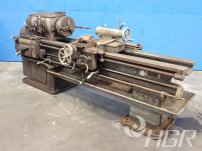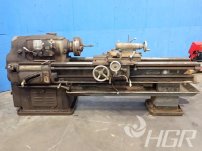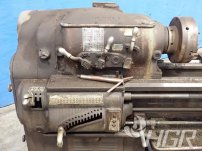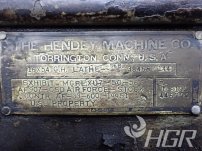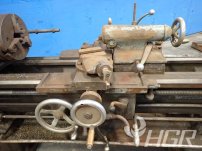Just closed the deal on a Hendey 16x54 lathe. It looks a little rough in areas, but in others, it is amazingly clean. I had/have some major reservations about closing the deal without seeing the machine under power, but it simply was not possible to do so. I did take care to inspect/verify everything possible. The first thing I noted was the ways look absolutely pristine. I assume they are hardened, but I found no tags to say so like I am accustomed to seeing on machines. I could literally find not a single scratch, scrape or ding along the entire length. The apron seems tight, the feed and cross slide clutches engage with authority, as do the split nuts. I examined the split nuts as well as I could with a mirror and a light and they have lots of life left in them. The lead screw has no appreciable wear, tho I am sure it isn't perfect either. The cross slide has very little backlash, probably less that 10 degrees of rotation. Not perfect, but far better than what I am working with now.
The spindle clutch engages with authority, and the brake sort of works, depending on what gear the headstock is in. Not sure how effective it was when new. I know some are better than others.
I shifted the headstock into every gear, and turned the belts by hand. Not a perfect solution, but the best I could manage at the time. Took a look in the gearbox and examined the gears that I could see. The interior of the headstock was painted a light?offwhite color, and there was no discoloration or corrosion visible and the oil looked clean and clear.
I tightened a machined bar into the chuck, and ran the tailstock up to it with a dead center, and checked for runout next to the chuck and at various locations along the length. even with the wretched looking 3 jaw that was mounted, runout was 2-3 thousandths, and there is no guarantee that the bar I found was perfectly true, so it looks pretty good to me.
Will be making another trip to inspect the headstock gears before money exchanges hands, but I will have to do a considerable amount of cleaning before I do, to keep from contaminating the oil. Is there anything else to be aware of or inspect closely that I might not be aware of?
The spindle clutch engages with authority, and the brake sort of works, depending on what gear the headstock is in. Not sure how effective it was when new. I know some are better than others.
I shifted the headstock into every gear, and turned the belts by hand. Not a perfect solution, but the best I could manage at the time. Took a look in the gearbox and examined the gears that I could see. The interior of the headstock was painted a light?offwhite color, and there was no discoloration or corrosion visible and the oil looked clean and clear.
I tightened a machined bar into the chuck, and ran the tailstock up to it with a dead center, and checked for runout next to the chuck and at various locations along the length. even with the wretched looking 3 jaw that was mounted, runout was 2-3 thousandths, and there is no guarantee that the bar I found was perfectly true, so it looks pretty good to me.
Will be making another trip to inspect the headstock gears before money exchanges hands, but I will have to do a considerable amount of cleaning before I do, to keep from contaminating the oil. Is there anything else to be aware of or inspect closely that I might not be aware of?


